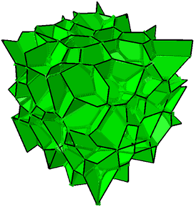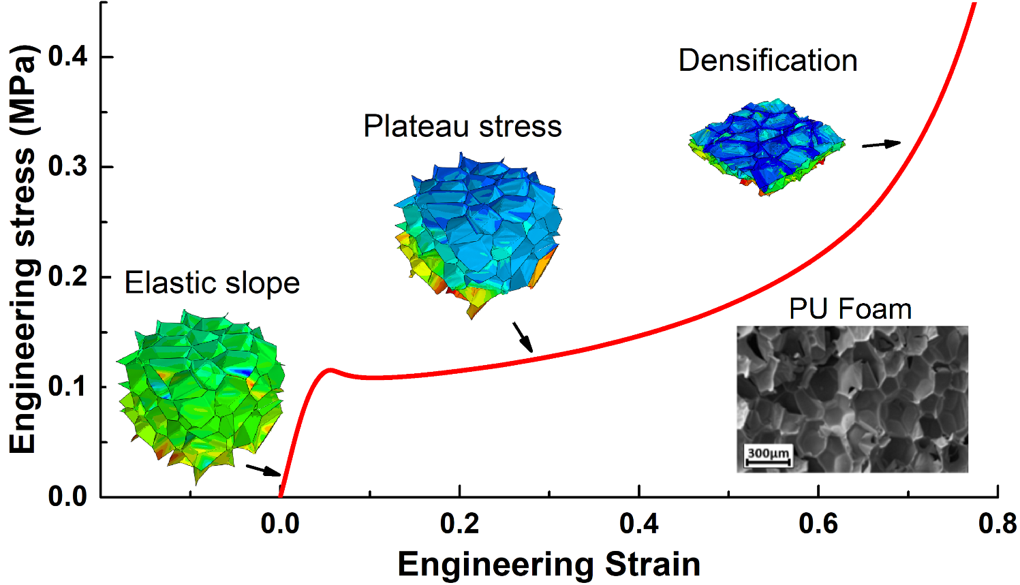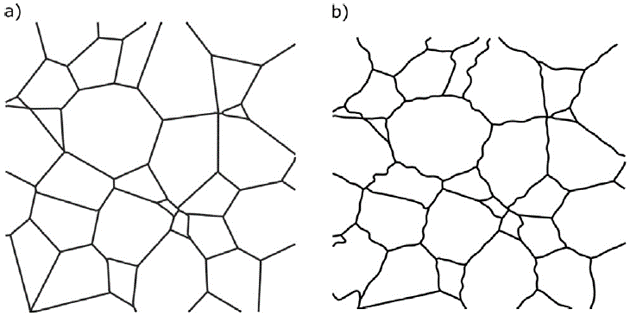Software details
Software authors
Mohammad Marvi Mashhadi, Javier Llorca, Claudio Lopes
Intellectual Property Rights
Copyright © 2012-2019 Fundación IMDEA Materiales and Universidad Politécnica de Madrid. All rights reserved
Transfer opportunity
Software license
Reference
- M. Marvi-Mashhadi. Multiscale characterization and modelling of polyurethane foams (Doctoral dissertation,Polytechnic University of Madrid, 2018).
- M. Marvi-Mashhadi, C. S. Lopes, and J. LLorca. “Modelling of the mechanical behavior of polyurethane foams by means of micromechanical characterization and computational homogenization.” International Journal of Solids and Structures 146, 154-166, 2018.
- M. Marvi-Mashhadi, C. S. Lopes, and J. LLorca. “Effect of anisotropy on the mechanical properties of polyurethane foams: An experimental and numerical study.” Mechanics of Materials 124, 143-154, 2018.
Software description
 MULTIFOAM is a simulation tool developed within the framework of computational micromechanics by IMDEA Materials to predict the mechanical behavior of low to medium density foams with open and closed-cell microstructure. The representative volume element of the microstructure is built from a number of parameters (density, cell size distribution, anisotropy and type, struts and walls mass fraction, mechanical properties of bulk material, etc.). The mechanical properties of foam under different loading conditions (including compression until full densification) are then computed by means of the finite element analysis (Abaqus/explicit) of the representative volume element.
MULTIFOAM is a simulation tool developed within the framework of computational micromechanics by IMDEA Materials to predict the mechanical behavior of low to medium density foams with open and closed-cell microstructure. The representative volume element of the microstructure is built from a number of parameters (density, cell size distribution, anisotropy and type, struts and walls mass fraction, mechanical properties of bulk material, etc.). The mechanical properties of foam under different loading conditions (including compression until full densification) are then computed by means of the finite element analysis (Abaqus/explicit) of the representative volume element.
MULTIFOAM is a ready-to-use software package developed using Python which includes a Graphical User Interface. The finite element based modelling strategy of the MULTIFOAM has been extensively validated in the case of polyurethane foams. The tool is fully automatized and could be used for design optimization.
MULTIFOAM capabilities



Relevant publications
[1] Modelling of the mechanical behavior of polyurethane foams by means of micromechanical characterization and computational homogenization.
M. Marvi-Mashhadi, C. S. Lopes, and J. LLorca
International Journal of Solids and Structures, Volume 146, 2018, 154-166. DOI: https://doi.org/10.1016/j.ijsolstr.2018.03.026
[2] Effect of anisotropy on the mechanical properties of polyurethane foams: An experimental and numerical study.
M. Marvi-Mashhadi, C. S. Lopes, and J. LLorca
Mechanics of Materials, Volume 124, 2018, 143-154. DOI: https://doi.org/10.1016/j.mechmat.2018.06.006
Contact
Knowledge & Technology Transfer Department, IMDEA Materials Institute
email: techtransfer.materials@imdea.org
telephone: +34 91 5493422

